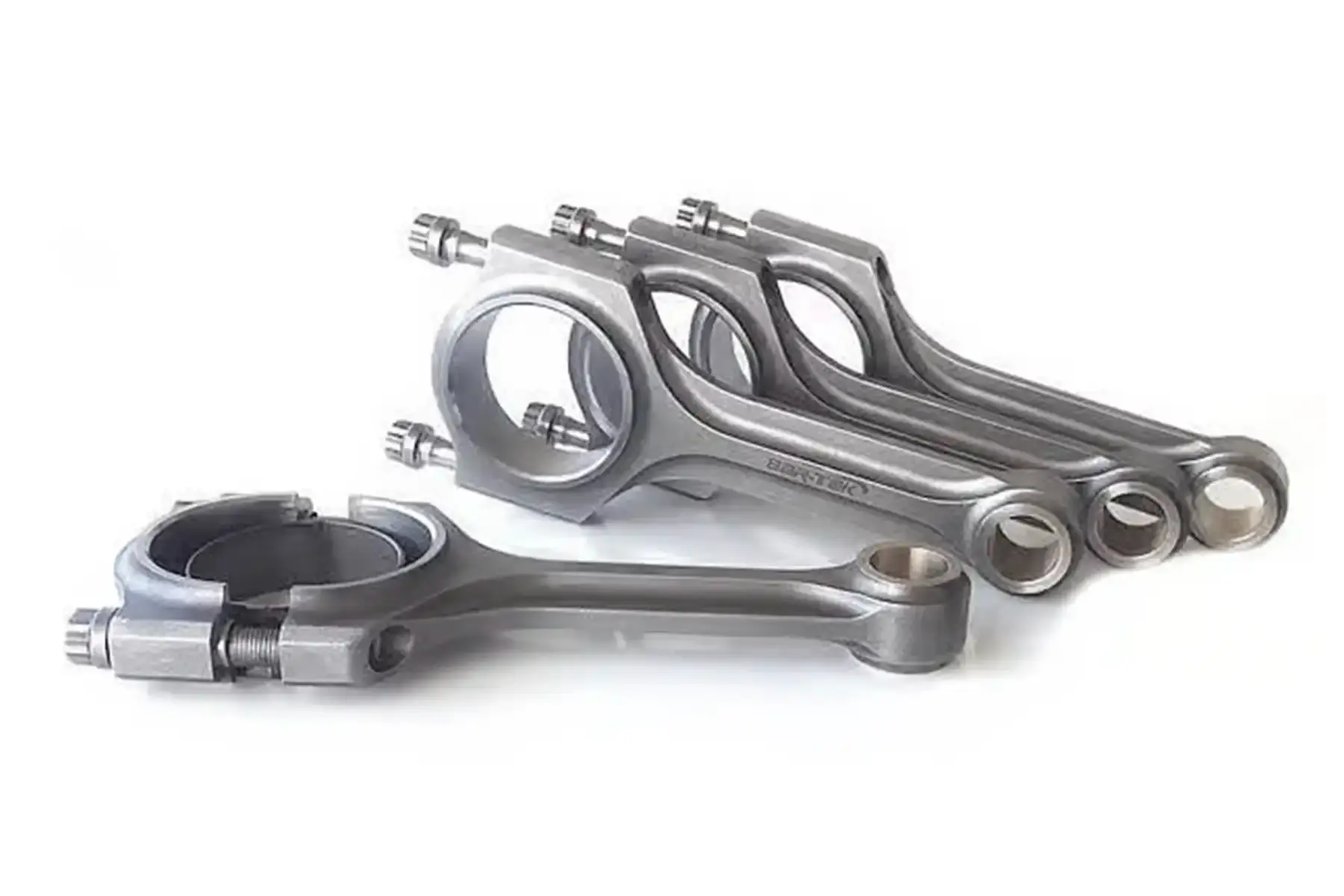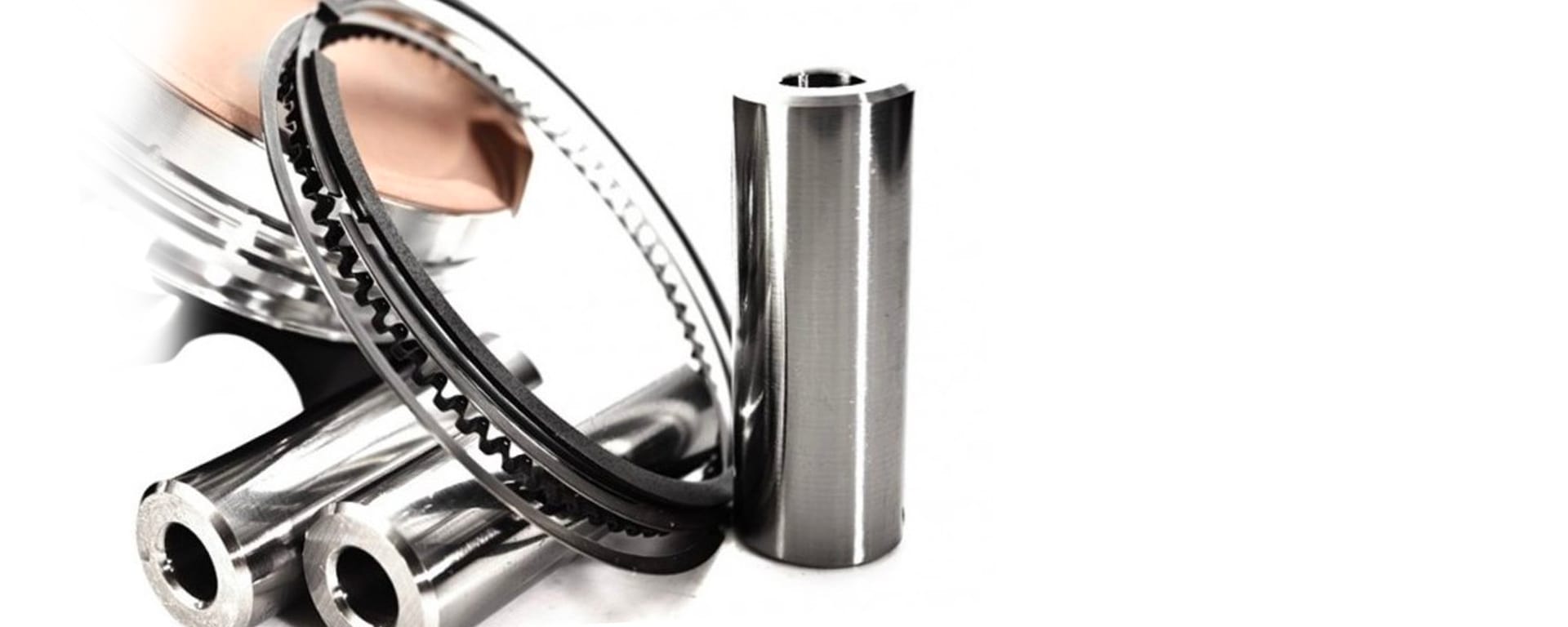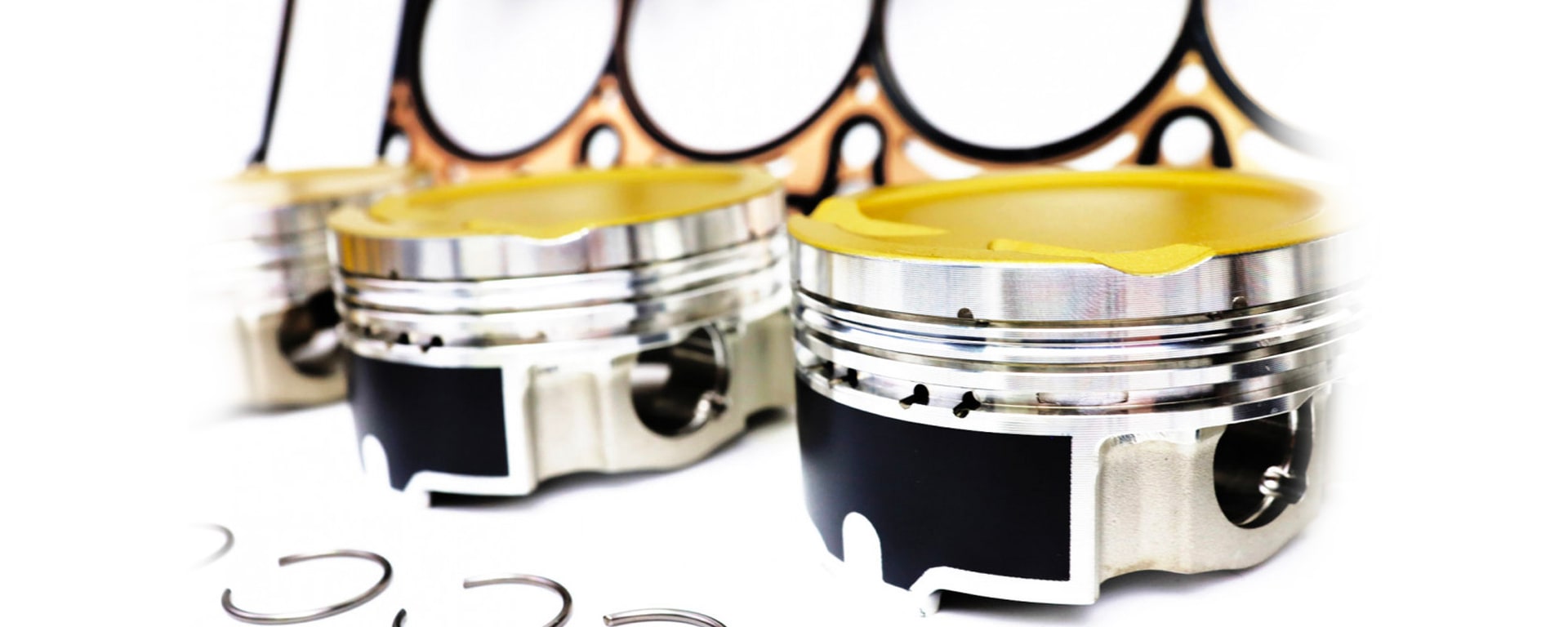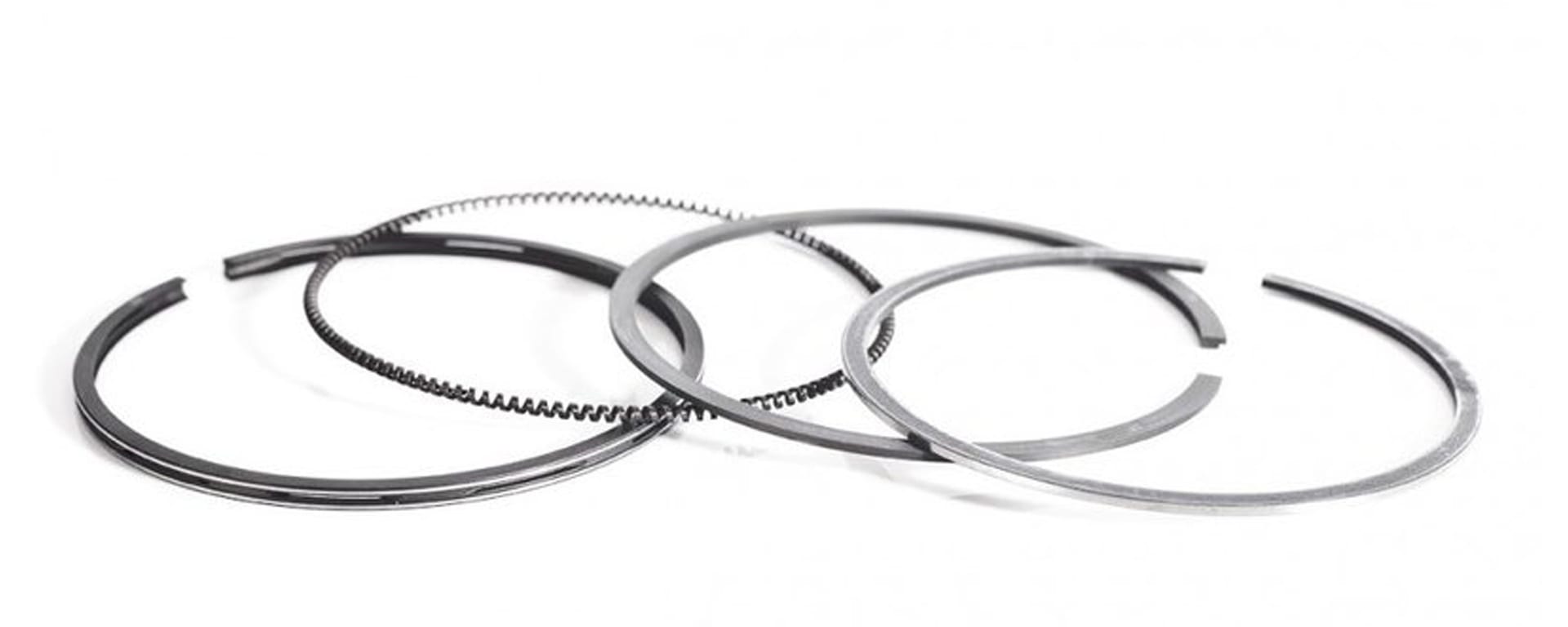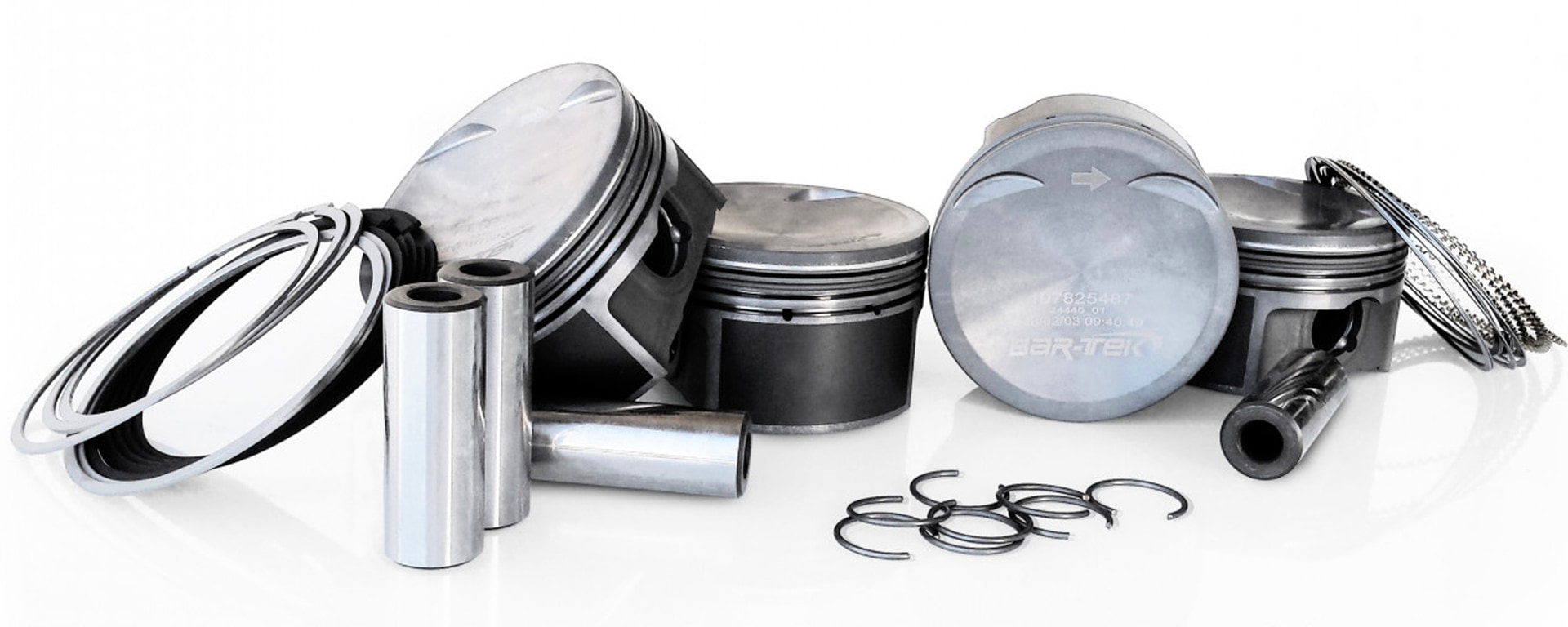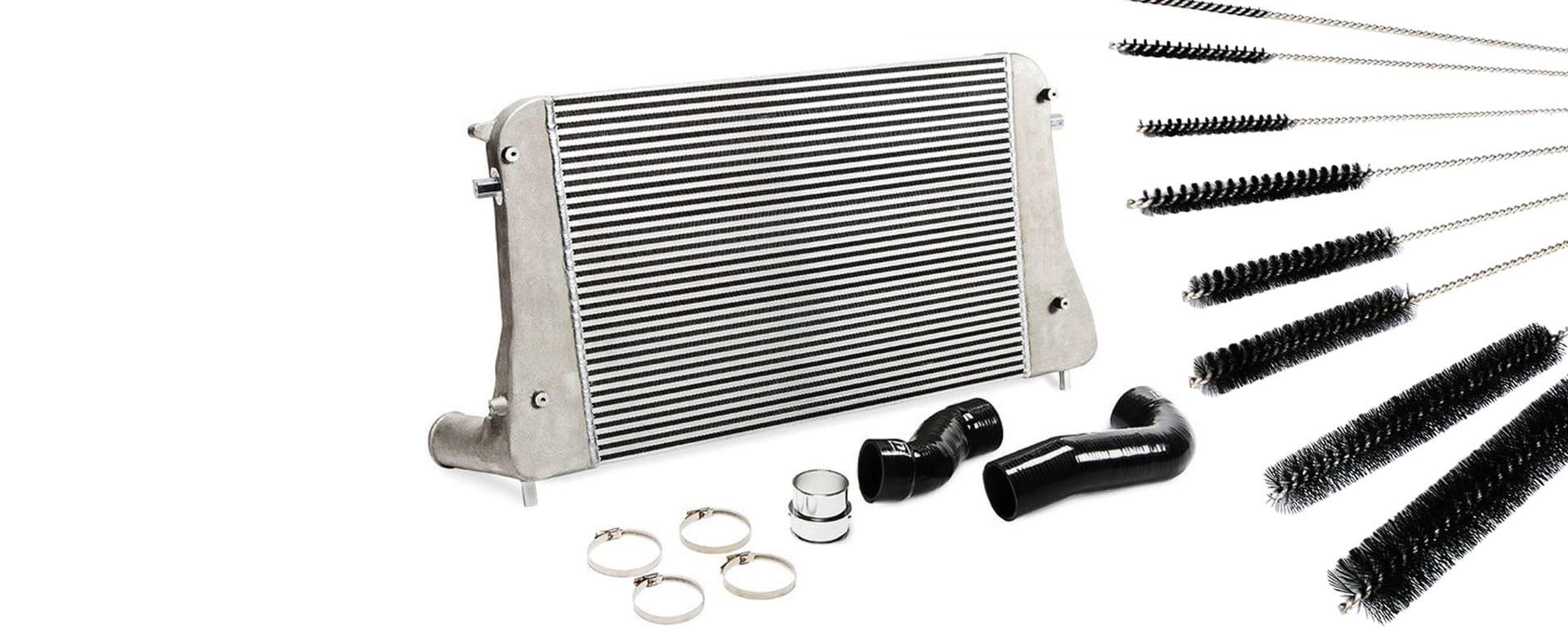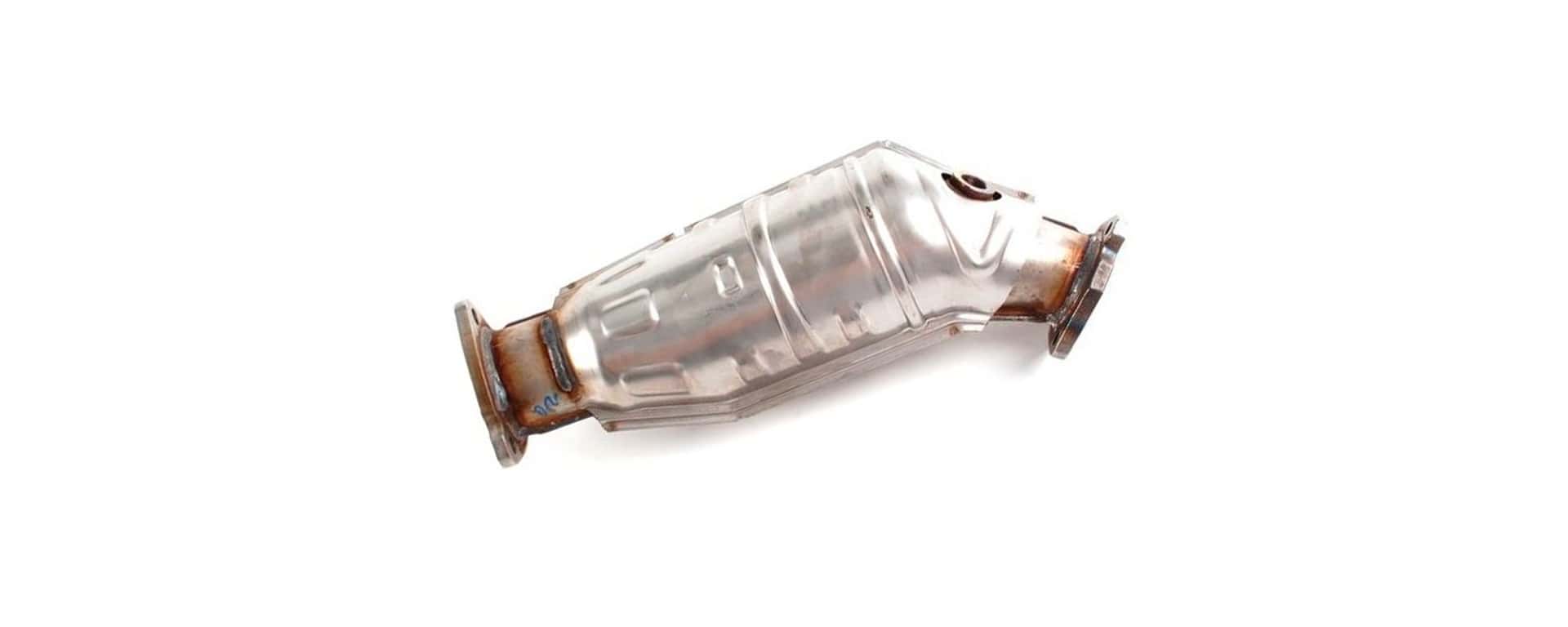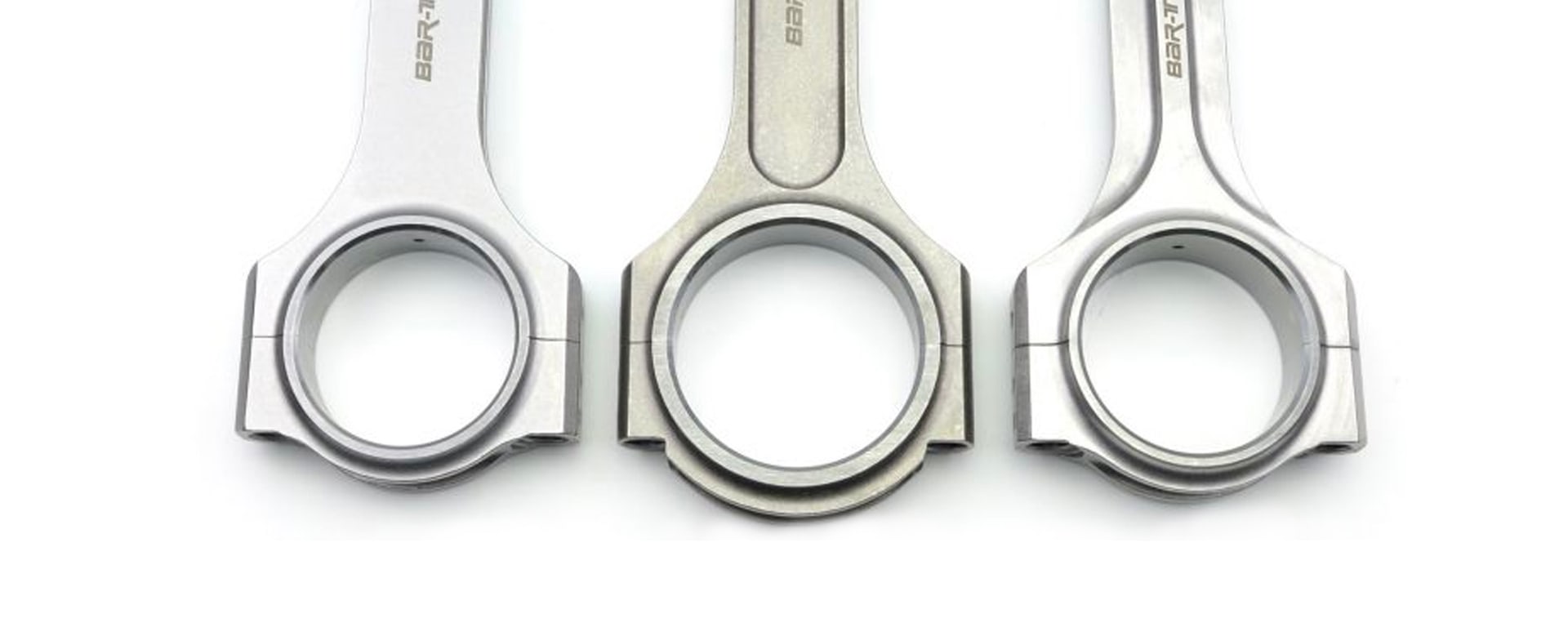

Connecting rods
The connecting rods are some of the most important components in your engine and the most crucial elements in engine tuning. Since they are exposed to extreme forces, they have to be able to sustain a lot when you boost your car’s performance.
In order for them to withstand the respective load, manufacturers vying against each other to attain better design and select better materials. That’s why there are very different types of connecting rods on the market. Each design has its advantages and disadvantages and is designed for a different application. There are also a few myths surrounding connecting rods. You will find out what types of connecting rods there are and what they are good for here.
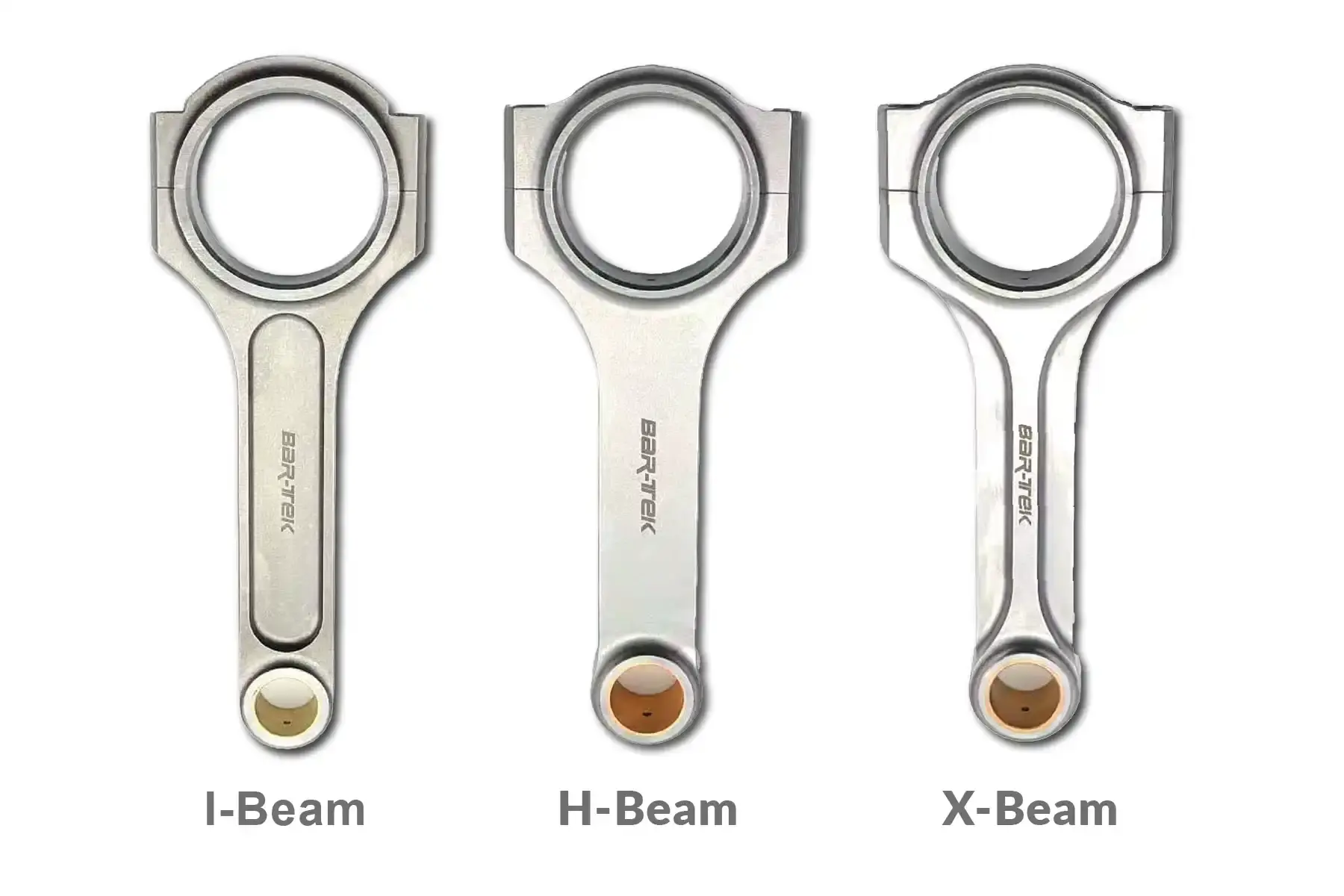
What are connecting rods and what are they there for?
Connecting rods are important and highly stressed components in your engine. They are located between the pistons and the crankshaft and convert the linear movement (up and down) of the pistons into the rotating motion of the crankshaft. In this process, high forces act on the connecting rods: from extreme heat to pressure and tensile and lateral forces. They are also exposed to bending and buckling. Standard connecting rods are not suitable for use in tuned cars and can quickly tear off under the strain. To ensure that this does not happen, high-performance connecting rods made of stronger materials and with a different cross section than series models have been designed. This means you are on the safe side with your power-boosted engine and don’t have to worry about major engine damage.
Structure of a connecting rod
The connecting rod consists of a connecting rod shank that links the connecting rod’s small end with the connecting rod’s big end. The small end sits on the piston pin and the big end sits on the crankshaft. The connecting rod itself can have different cross-sections, which define the respective connecting rod type, for example, I-beam, X-beam, or H-beam.
For installation, the big end is split on the crankshaft and mounted on the crank pin with a slide bearing. The small end bears the piston pin and has a bearing bushing. For optimal lubrication, an oil duct is usually drilled through the connecting rod through which the pistons are lubricated.
The way the big end is split may also vary: there are straightly split connecting rods and diagonally split connecting rods (the latter, for example, in diesel engines).
The separation procedures also vary: the rods may be cracked (broken) or milled/ground. During cracking, the piston rods are first manufactured in one piece and then a notch is made in them. They are then broken at this notched predetermined breaking point (cracked). This type of separation enables particularly great force transmission, as the connecting rod and connecting rod bearing cap fit together precisely. To ensure that they fit together accurately, the connecting rod and connecting rod bearing cap must always be used together and cannot be replaced individually.
What material are connecting rods manufactured out of?
Connecting rods are produced from different materials. Because they have to be very lightweight and very strong on the one hand, sintered metals and high-quality aluminium are particularly well-suited. Although aluminium connecting rods are very lightweight and stable, they have a shorter service life than steel connecting rods. In rare cases, connecting rods are also made of titanium. Depending on the material, connecting rods are either forged, cast, or milled out of solid metal.
What types of connecting rods are there?
I-beam connecting rod
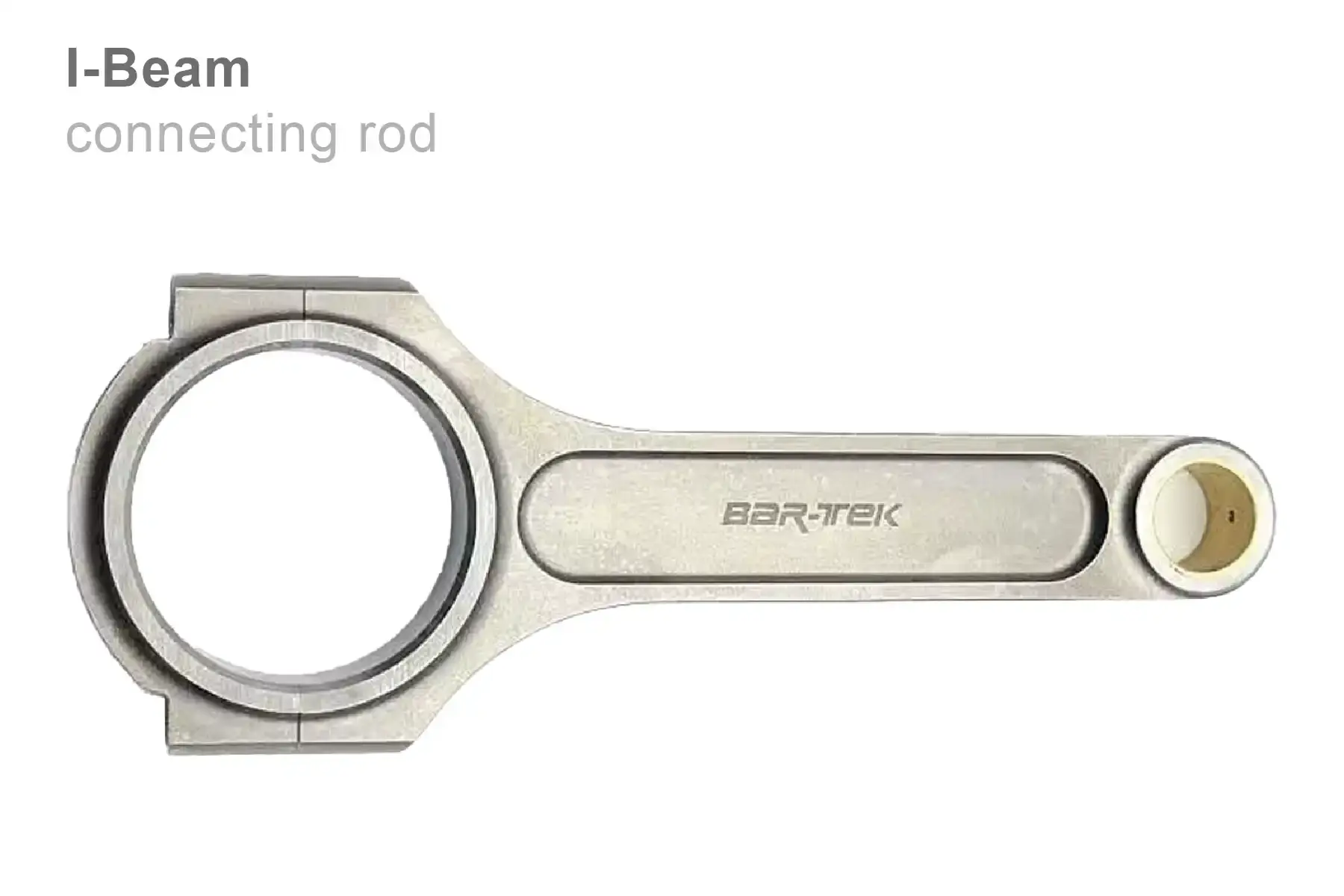
I-beam connecting rods owe their name to their resemblance to a capital ‘I’ when you cut them apart. Connecting rods with an I-beam are the most common type of connecting rods and thus the ones most often used in series production. They are cheap to manufacture and generally withstand more than they would actually need to in standard engines. Standard I-beam connecting rods are often heavier than those with an H-beam. With our high-performance I-beam steel connecting rod (like in this set for the 1.8T), however, this generalization doesn’t apply. These are very lightweight and often sustain up to 1,000 hp, which is mainly due to the fact that they are milled out of solid, high-strength steel.
Connecting rod with H-beam
The cross-section of connecting rods with an H-beam resembles a capital ‘H’, which is where they get their name from. They are designed for engines that run with a lot of hp at low speeds: usually charged engines with a turbocharger or compressor. These are optimal to withstand the pressure from compression. One example of this is our H-beam connecting rod for the 2.5L TFSI like in the Audi RS3.
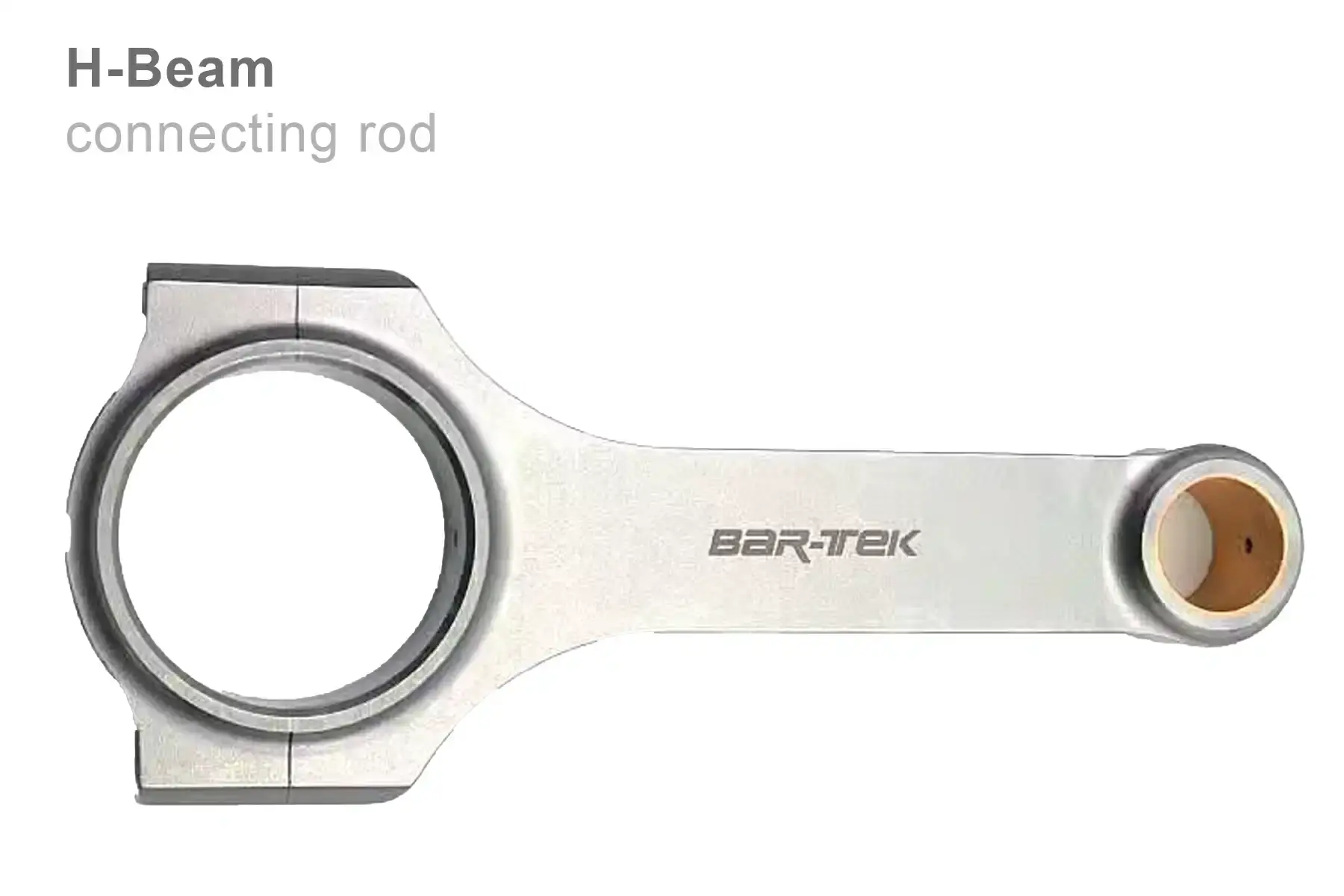
X-beam, cross beam
Connecting rods with an X-beam are the latest achievement from connecting rod manufacturers. They are like a sort of hybrid between I-beam and H-beam and combine the best properties of their predecessors. These connecting rods have a large cross-section, thereby distributing the tension across the entire connecting rod. Thanks to their high rigidity and crack resistance as well as minimal weight, they are basically made for racing. You can get the BAR-TEK X-beam connecting rod for your 2.0L TFSI, for example, as a set.
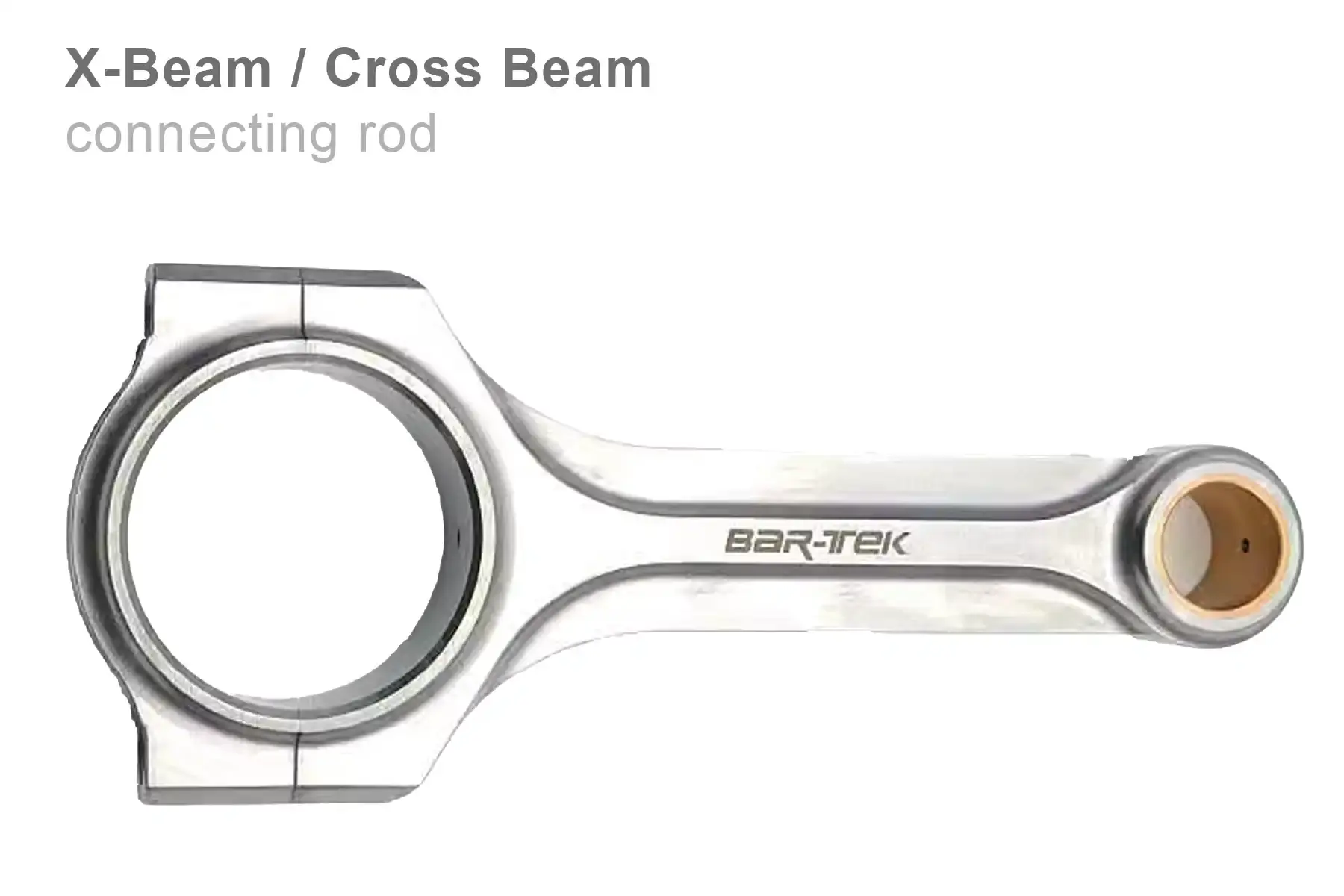
Which connecting rods for which engine?
The rule used to be: under excessive strain, connecting rods can easily tear apart, since the force is exerted in a linear manner. How strong the tensile force on a connecting rod is depends primarily on its cross-section and material. With charged engines, in which compression forces act on the connecting rods, this is different. Here, the connecting rods bend, since these forces are not linear. The shape of the connecting rod plays a greater role here: An H-beam connecting rod is lighter than its I-beam counterpart and can better minimise these forces. It is therefore sturdier when exposed to compression forces and thus better suited for charged engines.
We are now able to produce connecting rods with different cross-sections and materials for all applications. An H-beam connecting rod is thus not necessarily better or worse than one with another form. It all depends primarily on the design and material.
That’s why you should make sure that when choosing your connecting rods, you pay attention to what performance level they are designed for. Also take a look at the material and don’t use connecting rods with poor quality. These can quickly tear or bend, ruining your entire engine.
Conclusion
In the past, the shape of a connecting rod played a much greater role than today. Now, the important thing is what material a connecting rod is made of and how it was designed. In any case, you should always rely on genuine, high-quality connecting rods to avoid damaging your engine. This is particularly true when you boost its performance.
























































































